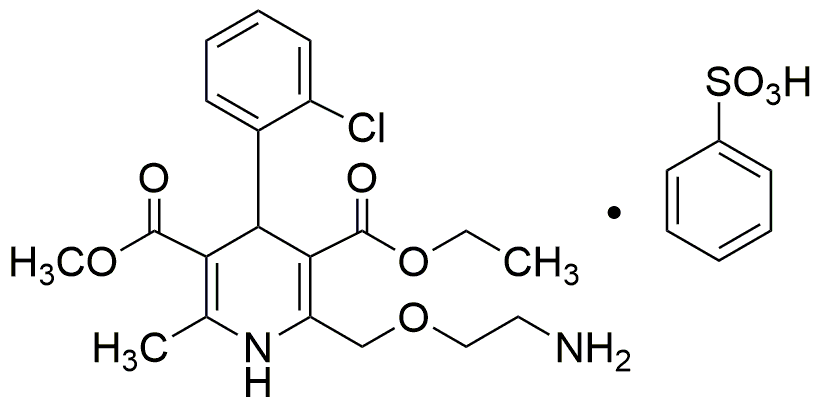Amlodipine besylate is widely utilized in research focused on:
- Hypertension Treatment: This compound is primarily used in the pharmaceutical industry to manage high blood pressure, helping to reduce the risk of heart disease and stroke.
- Angina Management: It is effective in treating angina pectoris, providing relief from chest pain associated with heart conditions, thus improving patients' quality of life.
- Cardiovascular Research: Researchers use amlodipine besylate to study its effects on vascular smooth muscle cells, contributing to the development of new cardiovascular therapies.
- Combination Therapies: It is often combined with other antihypertensive agents, enhancing treatment efficacy and allowing for lower doses of each medication, which can minimize side effects.
- Patient Compliance: The formulation of amlodipine besylate allows for once-daily dosing, which improves adherence to medication regimens among patients.
General Information
Properties
Safety and Regulations
Applications
Amlodipine besylate is widely utilized in research focused on:
- Hypertension Treatment: This compound is primarily used in the pharmaceutical industry to manage high blood pressure, helping to reduce the risk of heart disease and stroke.
- Angina Management: It is effective in treating angina pectoris, providing relief from chest pain associated with heart conditions, thus improving patients' quality of life.
- Cardiovascular Research: Researchers use amlodipine besylate to study its effects on vascular smooth muscle cells, contributing to the development of new cardiovascular therapies.
- Combination Therapies: It is often combined with other antihypertensive agents, enhancing treatment efficacy and allowing for lower doses of each medication, which can minimize side effects.
- Patient Compliance: The formulation of amlodipine besylate allows for once-daily dosing, which improves adherence to medication regimens among patients.
Documents
Safety Data Sheets (SDS)
The SDS provides comprehensive safety information on handling, storage, and disposal of the product.
Product Specification (PS)
The PS provides a comprehensive breakdown of the product’s properties, including chemical composition, physical state, purity, and storage requirements. It also details acceptable quality ranges and the product's intended applications.
Certificates of Analysis (COA)
Search for Certificates of Analysis (COA) by entering the products Lot Number. Lot and Batch Numbers can be found on a product’s label following the words ‘Lot’ or ‘Batch’.
*Catalog Number
*Lot Number
Certificates Of Origin (COO)
This COO confirms the country where the product was manufactured, and also details the materials and components used in it and whether it is derived from natural, synthetic, or other specific sources. This certificate may be required for customs, trade, and regulatory compliance.
*Catalog Number
*Lot Number
Safety Data Sheets (SDS)
The SDS provides comprehensive safety information on handling, storage, and disposal of the product.
DownloadProduct Specification (PS)
The PS provides a comprehensive breakdown of the product’s properties, including chemical composition, physical state, purity, and storage requirements. It also details acceptable quality ranges and the product's intended applications.
DownloadCertificates of Analysis (COA)
Search for Certificates of Analysis (COA) by entering the products Lot Number. Lot and Batch Numbers can be found on a product’s label following the words ‘Lot’ or ‘Batch’.
*Catalog Number
*Lot Number
Certificates Of Origin (COO)
This COO confirms the country where the product was manufactured, and also details the materials and components used in it and whether it is derived from natural, synthetic, or other specific sources. This certificate may be required for customs, trade, and regulatory compliance.


